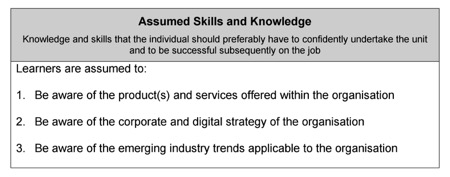Having attended courses by local training providers in Singapore myself and running a Digital Marketing training organization, I sometimes wonder whether these companies are in business to deliver true value or just trying to capitalize on government grants… or a mix of both.
I’d say most, including myself, take both into account. With generous government grants such as SkillsFuture Credit, PIC, and WSQ funding, it’s tempting to dive into the training business without any commitment to deliver quality training. As long as the curriculum covered meets the criteria for government funding, why bother going above and beyond? Sadly, this is the case for a number of training providers here in Singapore.
During my Advanced Certificate in Training and Assessment (ACTA) course at WDA (now divided into SSG and WSG), I was exposed to many effective training delivery methods, where your ability to train was no longer just measured by how good you were at lecturing in front of your slides, but a lot more focused on how adept you are at facilitating group discussions, in-class activities, and experiential learning.
I must say our ACTA facilitator, Josephine Teo, was successful in transferring a great deal of knowledge to us trainees and I highly recommend that all trainers and aspiring trainers sign up for the course.
This opened up my eyes to how much knowledge and skills can be acquired through effective training delivery techniques. At the same time, it made me realise how frustrating it can be when you attend a course but take home virtually nothing useful or applicable.
So what should startups, SMEs, MNCs, and institutions look out for before sending their employees to upgrade their skills at industry-relevant courses?
1. Read the learning outcomes
Learning outcomes are the training objectives that should be met after completing a course. It should be very specific and align with your organizational needs, which is the reason you are sending your employees for training in the first place.
Here’s an example of a detailed learning outcome for a baking course which trains bakery store bakers:
By the end of the course, learners will be able to bake at least 50 Hong Kong style egg tarts in 90 minutes using a preheated oven.
Here’s an example of a brief and sloppy learning outcome for the same course:
By the end of the course, learners will understand and know what is needed to bake an egg tart.
You can clearly see the difference between the two. The first one is well thought out and tells you exactly what you will be able to accomplish after completing the course. The second implies that the course will likely be very general, with lots of theory, and little hands-on activities.
What does this mean for you?
If you see sloppy learning outcomes or even no learning outcomes stated at all. Run the other way.
2. Scope of curriculum, in-class activities, number of topics covered vs. course duration
The topics covered, in-class activities, and scope of the curriculum should all be aligned toward the learning outcomes. This is known as constructive alignment.
In a 2-day course for instance, there are roughly 12 – 15 hours of classroom learning hours (excluding assessment and breaks). If there are too many topics to cover, the trainer will generally skim through the slides and give theory-based lectures in the interest of time.
Without any practical or experiential learning activities such as problem solving through group discussions and jigsaw learning approaches, it will be hard for any meaningful learning to take place. Trainees are often left frustrated and will proclaim “information overload”!
What does this mean for you?
Ask for a detailed outline of the lesson (generally a lesson plan, although training providers may not share this with the client), types of in-class activities, and the breakdown of the timing needed of each topic.
3. Trainer’s profile
You’ve heard the saying “Those who can’t do, teach. And those who can’t teach, do.” This saying does hold some truth to it. This means an expert may be the best person to get a job done, but may be terrible at transferring his or her knowledge and skills.
On the other hand, if you’re good at teaching but you don’t know your stuff, you’ll struggle to explain the topic and convey key concepts. An effective teaching technique is to pull real world examples from past experiences, yet an inexperienced trainer will have little experience to pull from.
I believe you have to be an expert at both in order to really give the best value to your trainees.
What does this mean for you?
Look out for trainers who are well sought after by well-known academic institutions. Some other areas to look at include:
- Their depth of expertise
- Past achievements
- Years of experience in relevant industries
- Training certifications (such as ACTA)
- Testimonials of past students who have specifically commended his/her training delivery style.
The key is to look at the specific achievements. Here’s an example of a detailed profile of our social media marketing trainer.
4. Pre-requisites/Assumed Knowledge before taking the course
Ensure your staff have sufficient knowledge before taking a course with basic pre-requisites, otherwise he or she will have trouble understanding certain terms and may have difficulty following along with the lesson.
Be sure to check through the section on assumed skills and knowledge. For WSQ courses, here’s what the competency standards document looks like:

5. Classroom/Training Room layout setting
You may also want to keep in mind the various room layouts and seating arrangements as this will impact the learning experience.
If the course is meant to be interactive with lots of group activities, a cluster style would be ideal. If it is lecture-based or computer-based, a traditional classroom style would be more suitable.
6. Is there any after-training support?
Though this is usually not expected and not a major purchase decision, some after-course support such as being able to email the trainer to clarify any course-related topics would be a value-added benefit.
It’s usually not possible to cover every topic to the fullest detail and it’s common for trainers to miss some points that could only be addressed to case-specific scenarios.
For example, in Microsoft Excel, you may use the same formulas for a variety of scenarios. During the course, the trainer may not have been able to cover all possible scenarios to apply the formulas, and the trainee may have only thought of a potential scenario which he or she might need to clarify regarding its application after the course has ended.
7. Course fees
More expensive doesn’t always equate to better quality. In fact, it’s usually the reasonably priced products (mid-ranged prices) that provide better quality.
You may disagree but I feel that the people who are out to dry out your wallet are usually the ones that don’t pay much attention to their quality of delivery. Whereas those who price their products reasonably are generally the more reasonable type and they take pride in what they do. That’s just my observation.
What does this mean for you?
The next time you’re about to make your purchase decision based on price, check through all the above points before signing that cheque.
Business & Finance Articles on Business 2 Community(40)
Report Post








